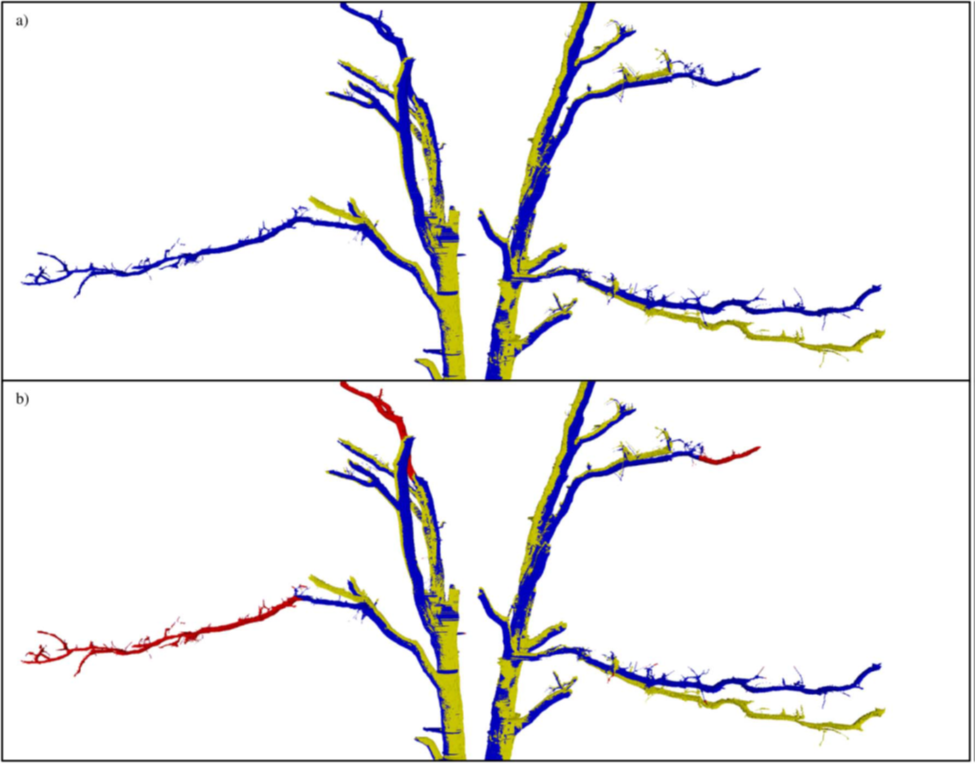Detecting and Quantifying Standing Dead Tree Structural Loss with Reconstructed Tree Models Using Voxelized Terrestrial Lidar Data

Introduction:
The structural loss rates of standing dead trees (SDTs) affect a variety of processes of interest to ecologists and foresters, yet the decomposition of SDTs has been traditionally characterized by qualitative decay classes, reductions in wood density as decay progresses, and sampling schemes focused on estimating snag longevity.
By establishing a methodology to accurately and efficiently quantify SDT structural loss over time, these estimated structural loss rates would improve the performance of a variety of models and potentially provide new insight as to the manner in which SDTs undergo degradation in various conditions.
Goal: The specific objective of this study were:
-
utilize the TreeVolX algorithm to estimate the volume of 29 SDTs scanned with terrestrial lidar;
-
develop a novel, voxel-based change detection algorithm capable of providing automated structural loss estimates with multitemporal terrestrial lidar observations; and
-
estimate and characterize the structural loss rates of Pinus taeda and Quercus stellata in southeastern Texas.
Highlights:
A voxel-based change detection methodology was developed to accurately detect and quantify structural losses and incorporated several methods to mitigate the challenges presented by shifting tree and branch positions as SDT decay progresses.
The volume and structural loss of 29 SDTs, composed of Pinus taeda and Quercus stellata, were successfully estimated using multitemporal terrestrial lidar observations over elapsed times ranging from 71 to 753 days.
Pine and oak structural loss rates were characterized by estimating the amount of volumetric loss occurring in 20 equal-interval height bins of each SDT. Results showed that large pine snags exhibited more rapid structural loss in comparison to medium-sized oak snags in southeastern Texas.